In the age of automation, people always look around to find ways they can execute tasks efficiently. And why not, every second matter!
Similarly, if you utilize an operating system like Unix, a Cron job comes handy to save your time by automating tasks. Let’s briefly understand how it works and then explore the number of cloud-based Cron monitoring solutions.
So, what’s a Cron job exactly?
A Cron job is a utility program that operates by scheduling a script or command onto the server. This command is embedded with a scheduled time and date to run automatically without manual implementation.
Moreover, Cron jobs are precisely implemented to automate repetitive tasks such as deleting files in a week, rebooting the server, or performing some other functions.
Basic Elements of Cron Job
A Cron job operates on the three important components:
- Script – the script is the first infusion in the Cron Jobs that is called for execution.
- Schedule – when to trigger specified scripts.
- Action – action is the course of output that is experienced after the final execution.
Types of Cron Jobs that require monitoring
Missing out on the Cron job notifications has no immediate repercussion, but it may hamper the system in the long run. Some of the Cron jobs that usually go unnoticed without the use of an efficient monitoring service are:
- Backups
- SSL Cert renewal
- Antivirus scan
- Dynamic DNS updates
- Server reboot
and, a lot more…
Perks of Cron Job monitoring
Apart from the true efficacy of Cron jobs in offering progressive control over the running execution with time, monitoring services come with these practical perks:
- Job Scheduling – using any type of Cron expressions or time intervals, scheduling jobs is now an easy task.
- Instant Alerts – if any of the application or job process takes more time than expected, then these services will give instant alerts.
- Metric Insights – you can track all the metrics of jobs as well as monitor them to take better actions.
Now, let’s explore some of the cloud-based Cron monitoring.
HealthChecks
The simplicity and effectiveness of HealthChecks make it one of the best choices for Cron job monitoring. It provides you with alerts for your weekly report triggers, schedule task failures, backup failures, and more.
Another impressive thing about HealthChecks is that it offers a unique URL for every periodic task for which the Cron Job monitoring is enabled. You can easily check HTTP service requests or send emails.
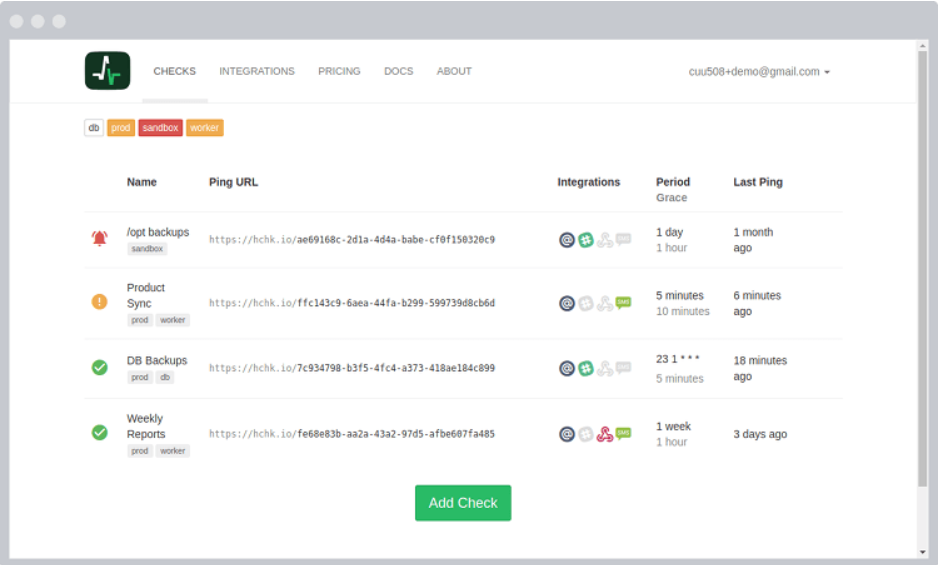
Using HealthChecks, the ratio of silent failures will eventually reduce. It features a live-updating dashboard that gives you details of all your alerts or checks. You can also assign names or tags to all your checks, which eventually help you easily recognize them afterward.
It comes with an easy configuration having ‘Grace Time’ and ‘Period’ parameters to indicate different aspects or status of monitoring. It allows you to add a detailed description for each check or Cron job.
You can add pointers and notes for your team to take further action. Plus, you can view sent or received ping history. Other features included are public status badges, Cron expression support, and integrations with Slack, Email, WebHooks, Microsoft Teams, etc.
Cronitor
Cronitor can assist you in scheduling the tasks more conveniently with quick alerts. It works with multiple Cron jobs like AWS scheduled events, Microsoft tasks scheduler, Jenkins Job, Kubernetes Cron, Java Cron, and more.
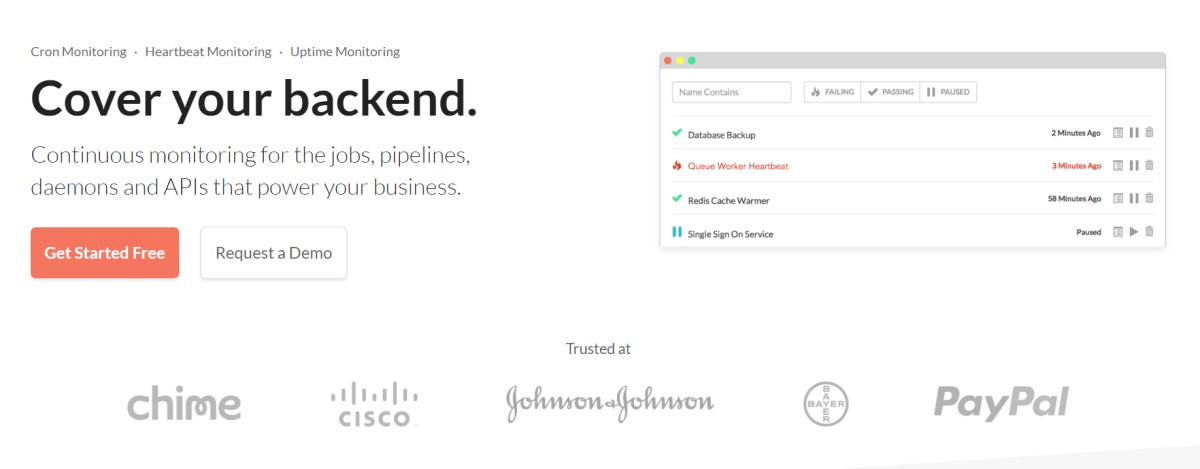
Heartbeat monitoring allows you to get an insight into the health of data pipelines, background jobs, daemons, scripts, ETL jobs, and others. It is effortless to use in any language or platform and has flexible alert policies and rules.
Cronitor also offers uptime monitoring for a website, API, S3 buckets, etc.
Cronhub
Cronhub eradicates the need to write any codes for scheduling and to monitor the background jobs. You just need to concentrate on your applications and let them schedule your tasks. You get instant alerts on your monitoring aspects as soon as any scheduled tasks are misaligned.
Schedule your jobs by utilizing Cron expressions or time intervals. For this, define an API or a targeted URL that executes on your job. Next, Cronhub sends an HTTP request to the API or targeted URL.
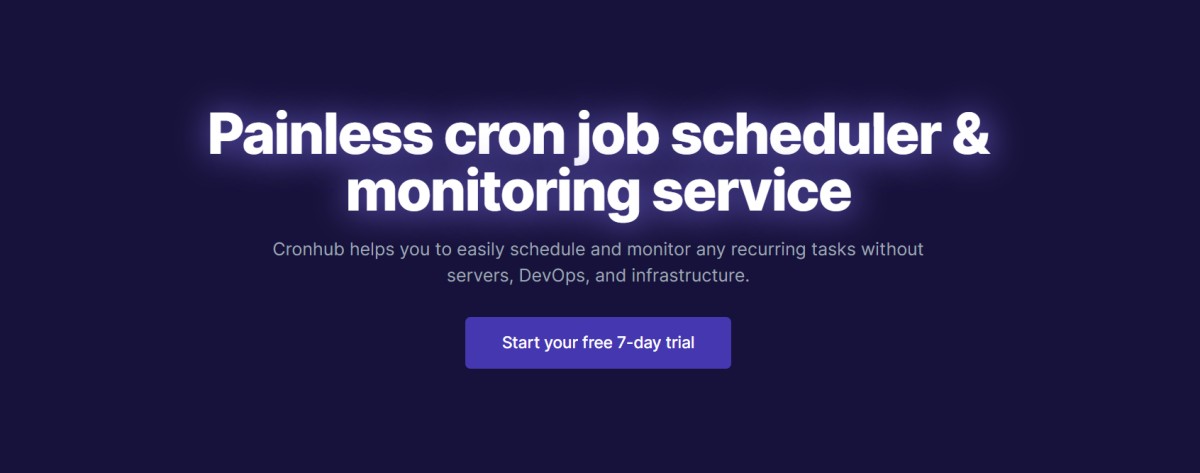
If the schedule gets interrupted due to any reason, Cronhub will send immediate alerts through integrated channels such as SMS, Slack, Email, or others.
Apart from these, Cronhub also helps you keep track of the insights for your jobs, provides team support, log access. This will eventually help you track down the loopholes of your application along with the background jobs.
Dead Man’s Snitch
Dead Man’s Snitch picked up the pace when the Cron job monitoring services were started booming. It targeted the point where the invoicing or the backup jobs were malfunctioned in accordance with their schedules.
Dead Man’s Snitch ensures the developers and the users keep track of the Cron job operations the way they expected it to perform. It helps you monitor Cron, Heroku Scheduler, and more. It takes notification from the HTTP client, such as cURL, to inform the users about any malfunctioning.
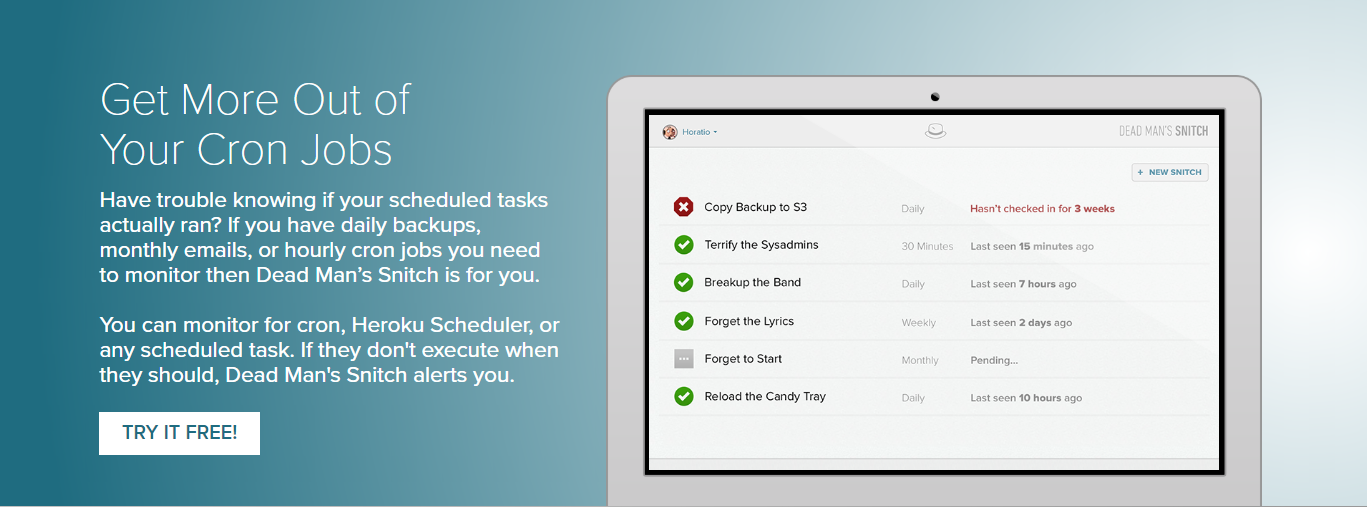
Curl is the snippet that adds as a suffix to the Crontab line end. It proposes a request to Dead Man’s Snitch to check whether the job is operating or operated correctly or not. For different jobs, you can change the Snitch URLs to know the monitoring results for all of them.
Another interesting feature is the addition of the ‘Field Agent’ feature to the job. Download and Install it for better monitoring results along with metrics and data records. With it, you can check your Cron jobs’ error logs to help find better resolutions to them.
These features are a perfect blend to ensure you keep better track of your background jobs. Its pricing starts at just $5/month for three snitches and unlimited team members.
CronAlarm
CronAlarm is the one-stop hub for helping you get all the insight related to the scheduled tasks’ reliability and performance with minimal complexities.
The best thing about CronAlarm is it supports every Cron job with the ability to access an URL without much hassle. All the background jobs of the applications that run too fast or slow either ahead or behind schedule are reported and notified to the users.

There are several integration platforms to alert users, including email, Slack, and webhooks. You need to give info to CronAlarm for your job operation schedules, such as running time, execution time, and others.
It assigns a specific API key to different jobs. To get started with the monitoring service by CronAlarm, you just need to add the API key or call at the beginning or end of the URL. You can also turn up to CronAlarm for acquiring advanced API equipped with integrated features to handle the issues better.
Web Gazer
Web Gazer helps you schedule the tasks and run monitoring on all those selected Cron jobs to track performance.
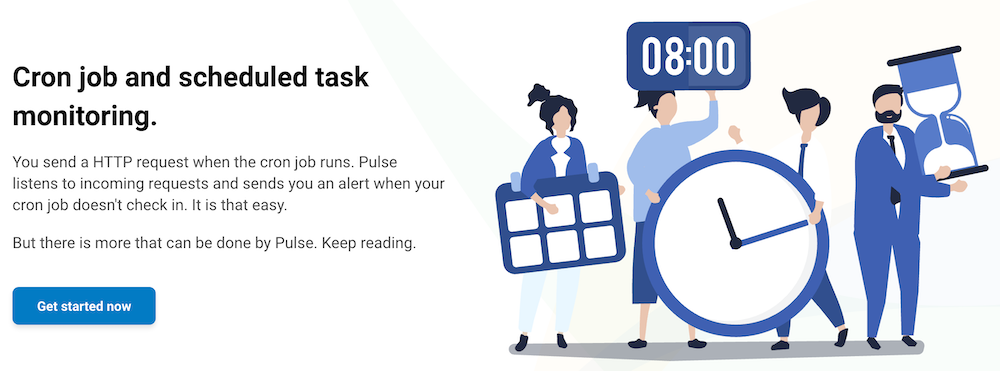
No false alarms are raised with Web Gazers as the incidents are validated within a fraction of seconds before sending the alert to the user. Besides, Web Gazer provides heartbeat monitoring, SSL monitoring.
Its plan starts at $19/month, or you can also use it for free with basic features.
Conclusion
Automation is the future.
Scheduling and monitoring your Cron jobs help you execute your tasks efficiently. Otherwise, how would you know if your operations are not going as planned? But don’t worry because the above solution will eventually help you streamline tasks and rectify loopholes hampering the user experience.



